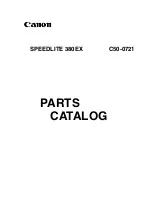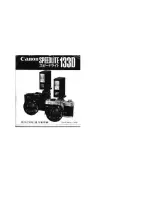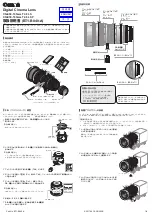
1-6
1
Overview
[7] Object identification (labeling) by binary conversion
Objects
No.1
No.2
No.3
No.5
No.4
No.6
When there are several objects and the measuring position is arbitrary, the presence or
absence of objects and the size of the objects can be determined.
- The specified pixel area is converted to a binary image. The number of objects, total
size of the white area (the objects) and the area, center of gravity, main axis angle, fillet
diameter, and circumference of each white area can be measured.
Detailed
instruc-
tion
- Setting measurement program
_
See "9-9 Object identification by binary conversion"
- Inspection procedure
Pur-
pose
Exam-
ple
Appli-
cation
Counting the number of food products or parts, measuring the sloped angle or center of
gravity of parts, and measuring the size of food products.
[Measured result]
Æ Object identification (labeling and
numbering), number of objects
present, total area
Æ Area, center of gravity, main axis
angle, fillet diameter, and circumf-
erence of each object (No.1 to
No.6).
[Measurement of 6 objects]
Measurement (area, gravity center, spindle axis angle,
fillet diameter, and circumference )
Image capture
Convert to binary values
Label (with serial numbers)
[6] Counting quantities by binary conversion
Detailed
instruc-
tion
- Setting measurement program
_
See "9-8 Counting quantities by binary conversion"
- Inspection procedure
[Measured result]
Æ Number of workpieces/total area siz
Capture image
Convert to binary values
Measure (quantity, total area size)
Workpiece
Pur-
pose
Exam-
ple
Appli-
cation
Checks the number of objects (max. 3000 pcs.) when there is more than one object in an
image. Measurement of the object’s position is optional.
- When the specified pixel field has been converted to a binary image, the white areas
are measured or identified as separate objects and counted.
Counting pieces of food or parts
















































